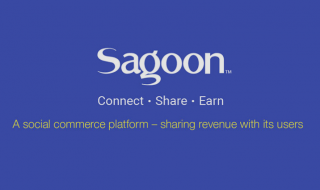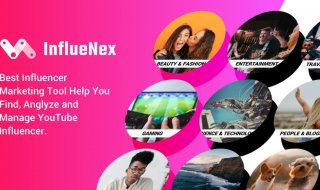The world of mobile apps is advancing at a breakneck pace. Each year brings new innovations that transform how apps are built, deployed, and experienced. For app developers and tech leaders, keeping up with the latest trends and technologies is crucial for delivering cutting-edge user experiences. This blog post will explore some of the most impactful innovations to shape app development in 2023 and beyond. From artificial intelligence to immersive realities, these trends open up fresh opportunities and bring new complexities. Read on for an overview of the innovations at the forefront of the fast-changing app landscape.
Contents
- 1. Leveraging the Power of AI and ML
- 2. Streamlining Engagement with Instant Apps
- 3. Delivering All-In-One Convenience with Super Apps
- 4. Optimizing for Foldable Devices
- 5. Decentralizing Services with P2P Apps
- 6. Designing Hands-Free Experiences
- 7. Crafting Captivating Motion Designs
- 8. Exploring Immersive Realities
- 9. Enabling Hyperlocal Functionalities with Beacon Technology
- 10. Connecting the Physical and the Digital with IoT
- Wrapping Up
1. Leveraging the Power of AI and ML
While AI and ML have been present for some time, their application has reached new heights, transforming the way tech leaders approach app development. A notable example of this progress is Apple’s Core ML 3, which empowers developers to seamlessly integrate AI into their apps, opening doors to a plethora of possibilities.

Tech leaders can leverage AI and ML to enable features like image recognition, sentiment analysis, voice recognition, and more. Beyond that, predictive maintenance, which utilizes AI to anticipate and prevent equipment failures or issues, can be invaluable for industries like manufacturing or utilities.
In 2023, AI and ML will revolutionize the entire app development process, from backend optimizations to frontend user experiences, making apps smarter and more efficient, ultimately setting the stage for unparalleled innovation.
2. Streamlining Engagement with Instant Apps
Instant apps are a pivotal trend in contemporary mobile app development, allowing users to access specific app functionalities without the need for a full installation. These apps are designed to streamline user experiences by eliminating the friction of downloading and installing large applications.
For example, in e-commerce, users can instantly preview and make purchases within an app without downloading the entire platform, leading to higher conversion rates. Travel apps allow users to check flight details or hotel reservations effortlessly, enhancing user engagement. Instant apps are not only user-friendly but also provide a valuable tool for app developers to entice users to engage with their offerings without the commitment of a full installation.
Leveraging Android Studio and Google Play Instant, developers can create these instant access points for their apps, enabling users to “Try Now” with a simple click. Apple introduced a similar concept with App Clips for iOS. For tech leaders, this represents an opportunity to significantly enhance user engagement and conversion rates.
3. Delivering All-In-One Convenience with Super Apps
Super apps are all-in-one apps that combine multiple services in one platform. Rather than downloading dozens of single-purpose apps, users can access a variety of functions from just one super app.
For example, Grab is a super app popular in Southeast Asia that offers services like ride-hailing, food delivery, digital payments, and more. Similarly, Meituan in China lets users access services ranging from grocery delivery to hotel bookings. The super app WeChat in China has over 1 billion monthly active users and provides messaging, social media, payments, e-commerce, and many other services.
For tech leaders, super apps present opportunities to drive user retention by becoming the single default app people rely on. Companies also gain rich user data across services to enable highly personalized recommendations. Building a super app takes thoughtful design so the wide array of services feels seamlessly connected. Be sure to avail of mobile app development services in Chicago for super apps only from reputed, experienced providers.
4. Optimizing for Foldable Devices
With foldable smartphones like the Samsung Galaxy Fold and Huawei Mate X entering the market, developers are designing apps optimized for foldable screens. This new form factor presents opportunities for more immersive and multi-tasking app experiences.
On a foldable phone, an app can span both the cover display and the larger folded screen. Apps can adapt their layout to work in different modes – single screen, dual screen, or expanded mode. Developers must optimize apps to transition seamlessly between display modes as a device folds or unfolds. Apps also need to adapt to different screen orientations and aspect ratios. New adaptive UI components and responsive design techniques are required.
As foldable devices become more mainstream, apps tailored for foldable screens will provide richer user experiences. Apps like YouTube, Spotify, Microsoft Office, and Samsung’s MultiStar are already adding support for dual-screen experiences.
5. Decentralizing Services with P2P Apps
Peer-to-peer apps allow users to directly connect, communicate, and share services or resources through their mobile devices. By eliminating middlemen, P2P apps create decentralized networks and marketplaces.
Ride-sharing apps like Uber and Lyft connect drivers with passengers through direct bookings. Similarly, apps like Airbnb and VRBO facilitate short-term rentals by putting homeowners in touch with travelers looking for accommodations. Other examples include marketplace apps like Letgo, OfferUp, and Wallapop that enable buyers and sellers of used goods to transact through the app. These apps rely on mobile connectivity, real-time interactions, and location services to directly match users.
As people increasingly rely on their phones for commerce and banking, P2P apps are positioned to challenge established industries. However, concerns around security, regulation, and support in case of fraud remain. However, the convenience and efficiency of direct mobile interactions will continue driving the adoption of P2P apps.
6. Designing Hands-Free Experiences
Touchless user interfaces are rapidly evolving as a paradigm shift in human-computer interaction for mobile apps. Instead of touching screens, users can control apps via hand and finger gestures, voice commands, gaze tracking, and spatial positioning. This enables more hygienic, eyes-free, and seamless interactions.
Several technologies are enabling this evolution – capacitive and infrared proximity sensors, radar chips, depth-sensing cameras with semantic segmentation models, far-field microphones with natural language processing, and spatial mapping algorithms. APIs like Apple’s ARKit, Google’s Motion Sense, and MediaPipe offer frameworks to implement touchless features.
Immersive use cases will emerge in Augmented Reality apps, IoT device control, assistive tech for disabilities, and mixed reality interfaces. However, usability constraints around user fatigue, cultural adoption nuances, and privacy concerns will need to be addressed.
7. Crafting Captivating Motion Designs
Motion design is becoming a key trend as apps shift to more animated and immersive interfaces. It expands static visual design into dynamic experiences by applying animation principles. For developers, this means going beyond basic transitional animations to create more complex, physics-based interactions.
Powerful game physics engines like Unity and OpenGL are making their way into app development. APIs like Apple’s Core Animation and Google’s Material Design are incorporating motion design capabilities. Motion design also opens up new genres, like artistic apps focused purely on aesthetic interactions rather than core utilities. Creative prototyping tools like Framer and Principle are easing elaborate motion designs.
Immersive motion designs can increase visual appeal and usability when aligned with user needs. However, excessive motion risks cognitive overload and energy drain on devices. Balancing aesthetics and functional minimalism is vital.
8. Exploring Immersive Realities
Extended reality (XR) transforms mobile apps by blending real and virtual worlds across a spectrum of immersive technologies. XR encompasses augmented reality (AR), virtual reality (VR), and mixed reality (MR), unified through advanced visualization, simulation, and human-computer interaction.
XR leverages smartphone sensors like cameras, motion sensors, depth sensors, and machine learning to analyze the environment and overlay contextually relevant digital information and objects. Headsets and glasses with improved displays and mobility make immersive XR more reachable.
For developers, XR introduces new frameworks like ARCore, ARKit, and six degrees of freedom (6DoF) spatial computing. UI/UX design has to shift from 2D to 3D interfaces. Real-time rendering, environmental occlusion, and physics simulation are key considerations.
Emerging use cases for extended reality span healthcare, industrial training, design visualization, gaming, and spatial assistive apps. XR promises to transform mobile interactions into a new era of experiential computing. However, developers must balance technical possibilities against ethical concerns around data privacy, security risks, and potential overuse.
9. Enabling Hyperlocal Functionalities with Beacon Technology
Beacon technology is enabling new location-aware and proximity-based features in mobile apps. Beacons are small, low-cost transmitters that use Bluetooth Low Energy (BLE) to broadcast signals that can be detected by mobile devices.
For developers, beacons open up precise indoor positioning, contextual notifications, contactless interactions, and location-based analytics. APIs like Google’s Nearby and Apple’s Core Location integrate beacon connectivity.
Beacon signals contain a combination of UUID, major ID, and minor ID metadata that apps can leverage to activate triggers and logic flows based on proximity. Apps can identify the distance from specific beacons to 1-2 meters.
Use cases of this wonderful technology include in-store promotions that pop-up when near relevant products, contactless payments as you enter stores, interactive museum tours, attendance tracking, and industrial workflows based on asset locations.
Overall, beacons bring a programmable, physical hyperlocal presence to mobile apps. Developers now have fresh opportunities to blend the digital and physical worlds through ambient, seamless interactions mapped to specific locations and spaces.
10. Connecting the Physical and the Digital with IoT
The Internet of Things (IoT) is driving tighter integration between mobile apps and connected devices. With IoT, everyday objects now have network connectivity to enable intelligent monitoring, automation, and data exchange.
For mobile developers, IoT opens up new ways for apps to interact with internet-connected devices. Apps can both remotely control IoT devices like smart thermostats, lights, and appliances. They can also visualize data from fitness trackers, industrial equipment sensors, etc.
Mobile IoT frameworks like Google’s IoT Core and AWS IoT let apps communicate with cross-platform device fleets. IoT backend platforms provide device registries, data visualization dashboards, and remote controls.
Apps also leverage IoT connectivity for features like home automation, driverless car controls, logistics optimization, industrial process management, and smart city services. IoT integration expands the app ecosystem beyond the smartphone screen.
with 5G and dedicated IoT networks expanding, mobile apps are poised to become sophisticated real-time command centers. Developers now have the opportunity to reinvent traditional experiences with previously impossible levels of remote coordination and ambient intelligence through mobile IoT integration.
Wrapping Up
The innovations highlighted in this post illustrate how mobile technology continues to rapidly evolve. While some trends, like artificial intelligence and extended reality, expand long-running tech trajectories, others, like super apps and instant apps, aim to transform user expectations and interactions.
App developers can continue delighting users and delivering unmatched value by staying updated on these developments and selectively adopting approaches that align with their product strategy and user needs. However, the technical possibility alone should not drive feature choices. Maintaining focus on the end-user experience remains key.



